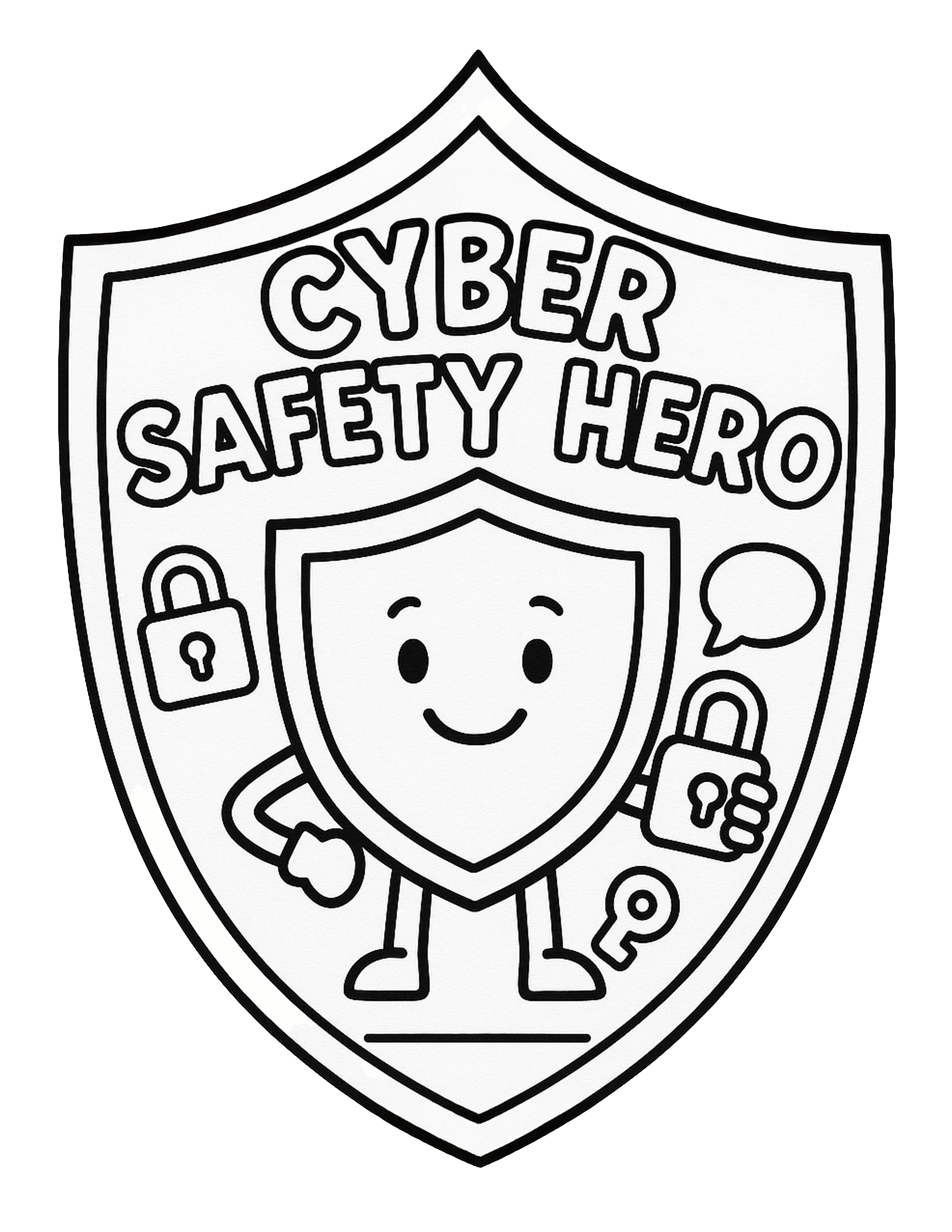Cyber security for kids might sound like a topic for older students, but it’s never too early to build safe digital habits. Even young children in grades K to 3 can start learning how to protect their information, think before they share, and ask for help when something seems off. Best of all, you don’t need a device to get started.
At Wired Me, we’re a family of web developers who believe early tech education should be fun, simple, and screen free. These unplugged lessons help you introduce cyber safety in ways that young kids can understand. You can use conversation, pretend play, and hands-on activities to build smart habits early.
Why Cyber Security for Kids Starts in K to 3
You might be wondering why cyber security for kids matters when your child isn’t even online yet. But chances are, they’ve already interacted with technology in small ways. Think of video calls, watching an app while sitting with a parent, or seeing you shop online.
This is the perfect time to lay the foundation. Early lessons teach kids to ask questions, make thoughtful choices, and come to you with concerns. These are the same habits that will help them stay safe as they grow older and start using tech more independently.
Three Cyber Security Lessons Kids Can Understand
These simple concepts make cyber security for kids feel natural and approachable. You don’t need any complex tech language to get started.
1. Passwords Are Private
A password is like a secret key. It protects something important, and only trusted people should know it.
Try this: Talk about what we keep private, like a journal or a hiding place. Use a simple “password hunt” to show how secrecy keeps things safe.
2. Think Before You Share
Ask your child, “Would you tell a stranger your full name or where you live?”
Help them practice this kind of thinking before sharing anything online.
Try this: Use pretend cards labeled with different facts like name, birthday, favorite food, and address. Let your child sort which are safe to share and which are not.
3. Always Ask First
When kids get in the habit of asking before clicking, opening, or replying, they stay safer.
Try this: Play a silly message game. Ask, “You get a letter that says you won a tiger. What should you do?” The answer is always to ask a trusted adult first.
Cyber Security for Kids Through Screen-Free Play
You don’t need any apps or software to teach these ideas. Try these unplugged activities to bring cyber safety into your daily rhythm.
🗝️ Password Treasure Hunt
Hide clue cards around the house. When solved in order, they lead to a prize. This helps kids understand a password as something secret and powerful.
🧠 Safe or Not Safe? Sorting Game
Print cards with examples like home address, favorite snack, or school name. Let your child decide which are okay to share and which should stay private.
💌 Pretend Email Roleplay
Use paper mail to simulate messages. Some messages can be from people your child knows and others from pretend names. Ask what they would do. Should they open it, delete it, or ask for help?
These hands-on games make cyber security for kids fun and easy to remember.
Tips for Teaching Cyber Security at Home
- Keep it casual and repeat often
- Reinforce the idea that tech use involves choices
- Let your child know they can always talk to you
- Use silly or pretend examples to keep the tone light
See these internet safety tips for K to 5 from Common Sense Education for even more ways to build safe habits at home.
Build a Habit of Safety
Create a simple reminder your child can say before using any kind of tech:
“Ask first. Think twice. Stay safe.”
When this becomes part of your daily rhythm, your child begins to approach technology with care. It becomes a habit, just like looking both ways before crossing the street.
Printable Cyber Safety Badge
Celebrate your child’s learning with a Cyber Safety Badge they can color and display. It’s a simple way to reinforce the idea that they are becoming thoughtful and safe digital citizens.

Download the free badge and pair it with the activities above.
FAQ
What age should I start talking about cyber security with my child?
You can begin as early as kindergarten. Start with simple habits like asking before clicking, keeping passwords private, and thinking before sharing. These ideas are easy to model and talk about through everyday situations.
My child doesn’t use the internet yet. Why teach this now?
This is the perfect time to begin. When kids learn safe habits early, they’re more likely to carry them over when they do go online later. It’s much easier to form good habits before bad ones have a chance to start.
Do I need any special tools or software?
No. Everything in this article can be done with paper, markers, and things you already have at home. No apps or devices needed.
What if my child already shares things online with friends or family?
That’s a great opportunity to have a conversation. Ask your child how they decide what is okay to share. Then practice using pretend examples to build stronger decision-making skills together.
How do I explain passwords to young kids?
Keep it playful. A password is like a secret key that protects something important. Only trusted people should know it. You can use treasure hunts, secret words, or code games to make the concept fun and memorable.
Where can I find more activities like this?
We are creating a full collection of unplugged lessons that teach coding, logic, and safety through hands-on games and simple activities. Everything is designed to be family friendly and screen free.


Leave a Reply